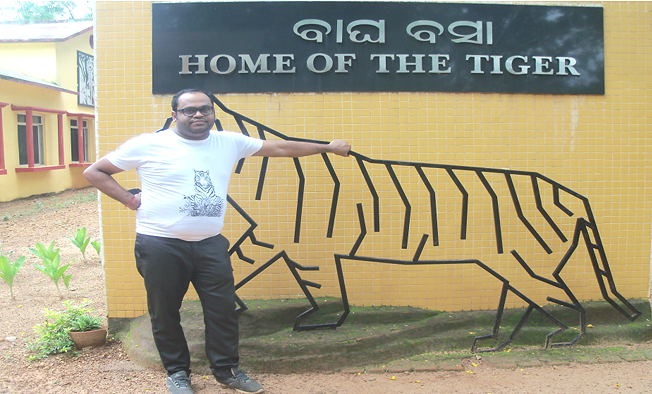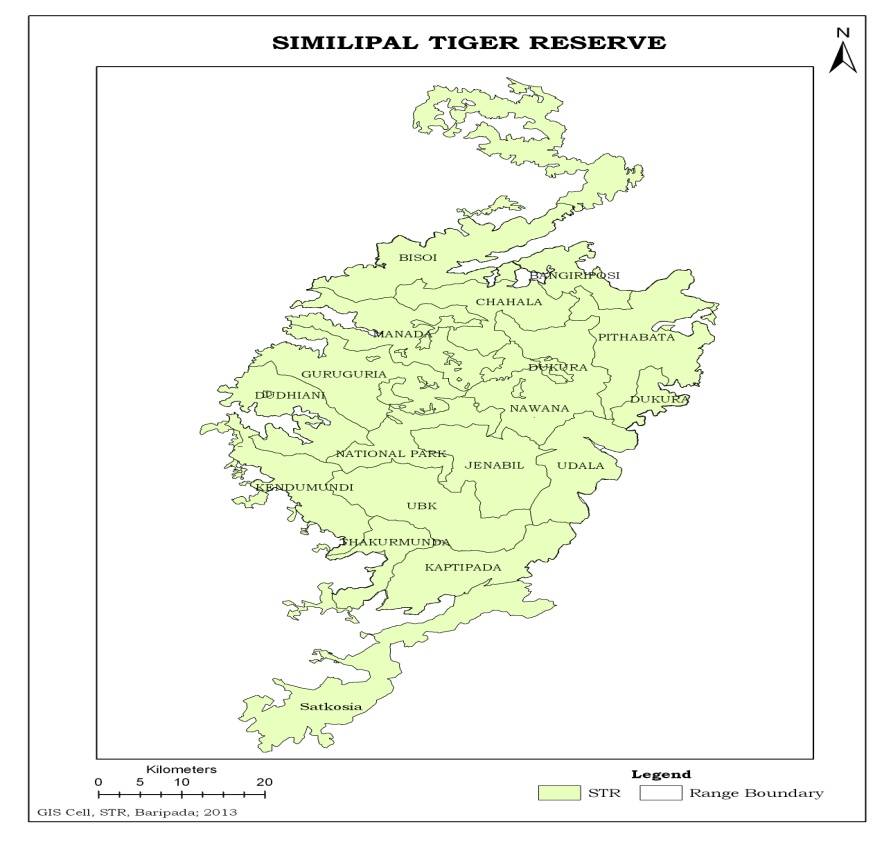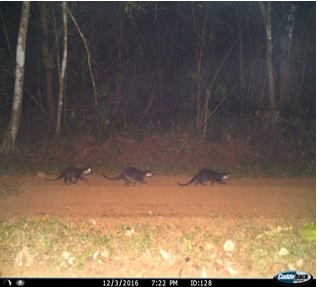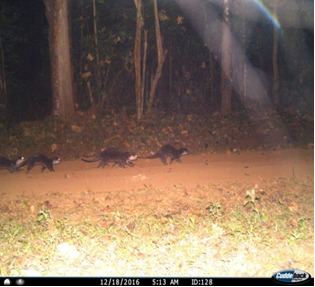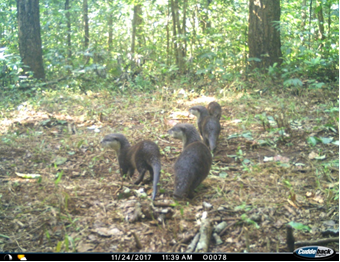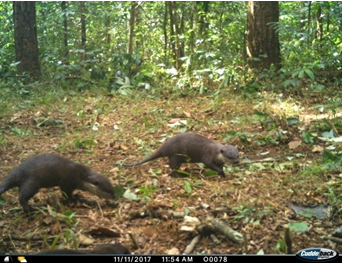IUCN/SSC Otter Specialist Group Bulletin

©IUCN/SCC Otter Specialist Group
Volume 35 Issue 4 (December 2018)
Citation: Mishra, SR and Mohan, M (2018). First Photographic Documentation and Distribution of the Asian Small-Clawed Otter Aonyx cinereus in Similipal Tiger Reserve, Odisha, India. IUCN Otter Spec. Group Bull. 35 (4): 186 - 192
First Photographic Documentation and Distribution of the Asian Small-Clawed Otter Aonyx cinereus in Similipal Tiger Reserve, Odisha, India
Sandeep Ranjan Mishra1and M. Mohan
1 Regional Chief Conservator of Forests and Field director,
Similipal Tiger Reserve, Baripada, India
Corresponding author: sandeep.mishra579@gmail.com
Received 27th March 2018, accepted 14th April 2018
Revised and accepted
Abstract: There is a decline in the populations of the Asian Small-clawed otter throughout its distribution, and there is a perception that it is a key stone species for riverine ecosystems. The species inhabits major freshwater wetlands throughout south and south-east Asia and often comes into direct conflict with humans for food and habitat. Further, the species is also suffering from neglectful attitudes and mismanagement due to a lack of baseline information. This paper presents camera trap images and distribution evidence for Asian Small-clawed otters in the Similipal Tiger Reserve.
Keywords: Asian Small clawed Otter, Camera trap, Similipal Tiger Reserve.
INTRODUCTION
The smallest Otter in the World, the Asian Small-Clawed Otter has incomplete webbing on its digits and short, spiky claws. The Asian small–clawed otter is found across much of South East Asia, with a continuous population in Southeast Asia, Northeast India and Himalayan foothills and Western Ghats in South India. Five subspecies have been identified namely Aonyx cinereus cinereus (Illiger, 1815), A.c.fulvus (Pohl, 1926), A.c wurmbi (Sody, 1933), A.c.concolor (Rafinesque, 1832) and A.c.nirnai (Pocock, 1940). A. c. concolor occurs in Upper Myanmar, Yunnan (China), Nepal, Bhutan, Assam, Arunanchal Pradesh, Garhwal, Southeast of Kumaon and Himalayan foothills through Sikkim to Kolkata and A. c. nirnai has been recorded from southern India in Coorg, Karnataka, Ashambu, Nilgiri and Palani hills, Tamil Nadu and some places in Kerala. Very few studies have been conducted on this species in Southeast Asia. Species assessments predict a decreasing population trend due to habitat loss and conversion: it was categorized as Near Threatened in 2004, but has recently been categorized as Vulnerable on the IUCN Red List (Wright et al, 2021).It’s diet is chiefly composed of crabs, crustaceans and molluscs (Foster-Turley 1992: Sivasothi and Nor 1994). A.cinerus prefers moderate to low vegetation structure (possible for escape cover) in riparian systems, although it also has been recorded from areas with sparse vegetation (Wright et al, 2021).
STUDY AREA
Similipal Tiger Reserve (Fig 1) is located in the Mayurbhanj District of Odisha and spreads over 2750km2 of the Chotanagpur plateau. The park is surrounded by high plateaus and hills, the highest peak being the twin peaks of Khairiburu and Meghashani (1515m above mean sea level). At least twelve rivers cut across the plain area, all of which drain into the Bay of Bengal. The most prominent among them are Budhabalanga, Palpala, Bandan, Salandi, Khairi, Khadkei, Budhabalanga, West Deo, and East Deo. An astounding 1078 species of plants, including 94 species of orchids, find their home in the tiger reserve. It hosts 55 species of mammals, 304 species of birds, 60 species of reptiles, 21 species of frogs, 60 species of fishes and 164 species of butterflies. The core comprises an area of 1194.75km2.
The Similipal is a densely forested hill range in the heart of Mayurbhanja, lying close to the eastern-most end of the Eastern Ghat in the Mahanadian Biogeographical Region and within the Biotic province of Chhaotanagpur plateau. Similipal is the richest watershed in Odisha, giving rise to many perennial rivers. The natural vegetation is moist deciduous type and is dominated by Shorea robusta, Anogeissus latifolia, Buchanania lanzan, Dillenia pentagyna, Syzygium cumini and Terminalia alata. During the camera trapping exercise in Similipal, as many camera traps as possible were placed along the footpaths, riverbanks and forest roads in order to maximize the number of photos captured. During the camera trapping exercise, images of Asian small-clawed otters were captured close to the West Deo river system in Upperbabrakamuda, and the East Deo river system in Jenabil.
METHODOLOGY
The success of camera-trapping depends on the selection of ideal locations to deploy the camera traps to maximize the number of captures. Prior to camera placement, surveys were done along the forest paths, animal trails, dirt tracks, dried stream beds etc. to record carnivore presence through indirect signs (pug marks, tracks, scat, scrapes, rake marks, scent deposits and kills). Potential locations of camera trap stations were then mapped using ArcGIS 9.3. During the exercise cameras were deployed on a sampling grid of 4.0s km (2.0x2.0km); pairs of “Cuddy back 1” camera traps were placed opposite to each other so as to capture photographs of both sides of a passing animal.
The camera trapping exercise lasted from February 2016 to May 2016, for 119 days, and November 2016 to June 2017 for a period of 175 days. The cameras were active for 24h periods, each defined as one sampling occasion. Each camera was assigned a unique identification number. Date, time, temperature, and camera ID were recorded for every capture. The location of each photo-capture of otters was recorded and mapped to understand their geographic distribution in the study area (Figure 2, Table 1).
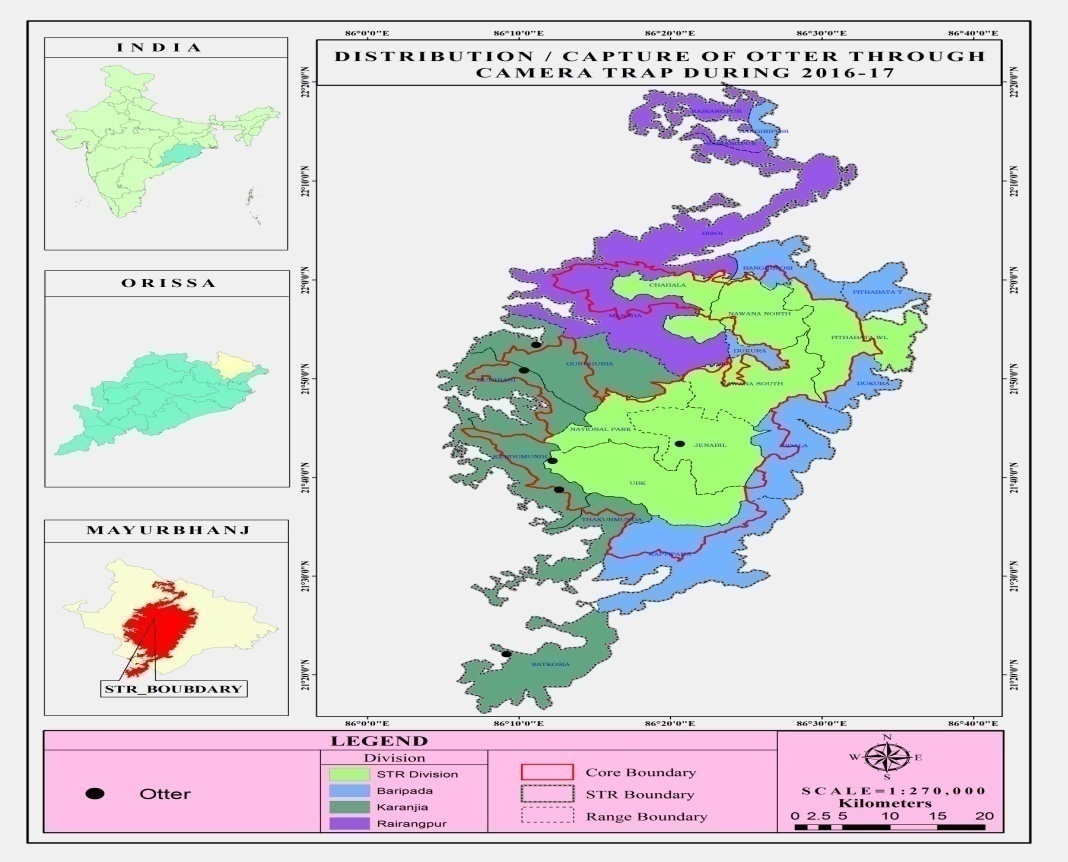
(click for larger version)
RESULTS
Otter photographs were captured on six cameras (Fig 3). Three cameras were placed on main forest tracks and the rest three on interior animal trails (footpaths). Both areas have moist deciduous and semi evergreen forest, with perennial river streams, East Deo and West Deo, contiguous to the camera points.
A total of 16 photos were captured during the exercise, covering both the core and buffer division of Similipal Tiger Reserve. Eight photos were captured in the STR core division and in Karanjia division. Range wise, most photos were captured in UBK (8) followed by Kendumundi (7), Gurguria (1) and Jenabil (1).
These records indicate suitability of the habitat for this species.
DISCUSSION
Otters are facing extreme threats from human-induced habitat destruction. The expansion of agriculture has led to the destruction of huge areas of natural habitats, including forests, grasslands and wetlands in nearly all regions of the world. The otters, at the apex of the freshwater food web, are a good indicator of healthy riverine ecosystems. The Asian Small-Clawed Otter has been categorized as vulnerable in IUCN’s Red List of Endangered Species, and is on Appendix II of CITES. It is also considered as endangered and included in Schedule I of the India Wildlife Protection Act 1972. The populations of all three otter species found in the Indian sub-continent are declining, mainly due to habitat loss and extensive trapping of the species. Mainly due to habitat loss and over-exploitation, the population of Asian Small clawed otters is declining throughout their range of distribution, and the trend of population decline is expected to continue. A deficiency of baseline data on the ecology of this species is another constraint for its conservation.
These observations establish that a population of this species is present in the Similipal Tiger Reserve, and this fact should be taken into account in the Reserve’s conservation planning policy.
Acknowledgements: The authors are thankful to all the field staffs of Similipal Tiger Reserve for their co-operation during the field survey.
REFERENCES
Foster-Turley, P.A. (1992) Conservation Aspects of the Ecology of Asian Small-Clawed and Smooth Otters on the Malay Peninsulas IUCN Otter Spec. Group Bull. 7: 26 – 29 https://www.iucnosgbull.org/Volume7/Foster_Turley_1992.html
Sivasothi, N. and Nor, B.H.M. (1994). A review of otters (Carnivora: Mustelidae: Lutrinae) in Malaysia and Singapore. Hydrobiologia, 285: 151-170.
Wright, L., de Silva, P.K., Chan, B., Reza Lubis, I. & Basak, S. (2021). Aonyx cinereus. The IUCN Red List of Threatened Species 2021: e.T44166A164580923. https://dx.doi.org/10.2305/IUCN.UK.2021-3.RLTS.T44166A164580923.en. Accessed on 12 July 2022.
Resumé: Première Documentation Photographique et Distribution de la Loutre à Pelage Lisse, Lutrogale Perspicillata, dans la Réserve de la Biosphère de «Similipal Tiger», État d’Odisha, Inde
Il y a un déclin des populations de la loutre cendrée dans toute sa distribution, et il y a une perception qu’il s’agit d’une espèce de pierre clé pour les écosystèmes fluviaux. L’espèce habite les principales zones humides d’eau douce du sud et du sud-est de l’Asie et entre souvent en conflit direct avec les humains pour la nourriture et l’habitat. De plus, l’espèce souffre également d’attitudes négligentes et d’une mauvaise gestion en raison d’un manque d’informations de base. Cet article présente des images de pièges photographiques et des preuves de distribution pour les loutre cendrée dans la réserve de tigres de Similipal.
Revenez au dessus
Resumen: Primera Documentación Fotográfica y Distribución de la Nutria de Uñas Pequeñas Asiática Aonyx cinereus en ea Reserva de Tigres de Similipal, Odisha, India
Hay una disminución de las poblaciones de la nutria de uña pequeña asiática en toda su distribución, y existe la percepción de que es una especie de piedra clave para los ecosistemas fluviales.La especie habita en los principales humedales de agua dulce en todo el sur y sureste de Asia y, a menudo, entra en conflicto directo con los humanos por la comida y el hábitat.Además, la especie también sufre de actitudes negligentes y mala gestión debido a la falta de información de referencia.Este artículo presenta imágenes de cámaras trampa y evidencia de distribución de las nutrias de garras pequeñas asiáticas en la Reserva de Tigres de Similipal.
Vuelva a la tapa
